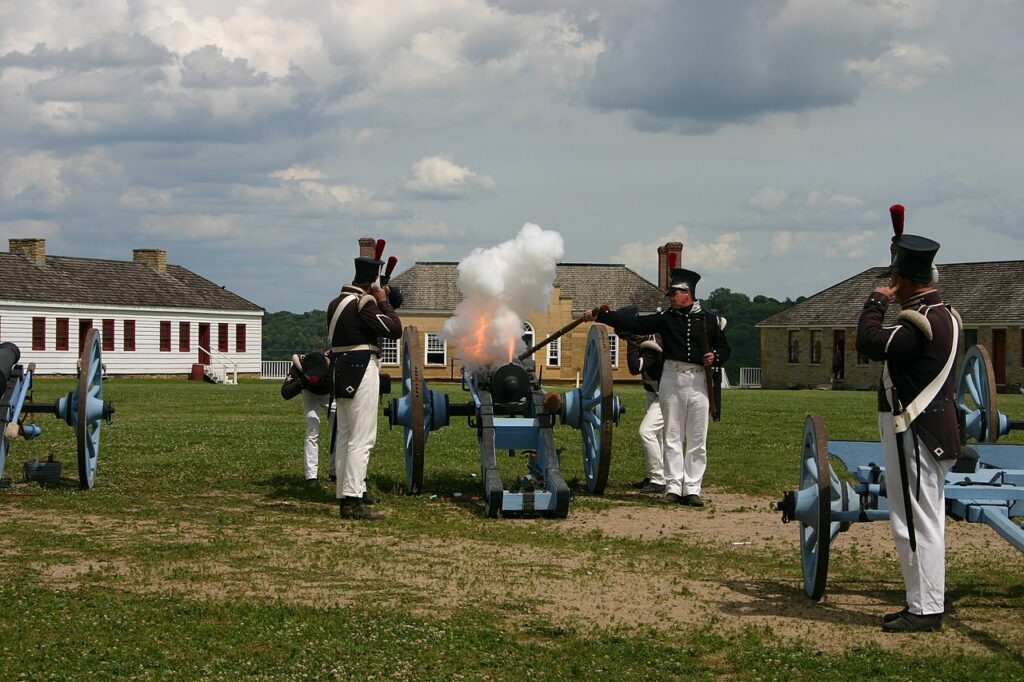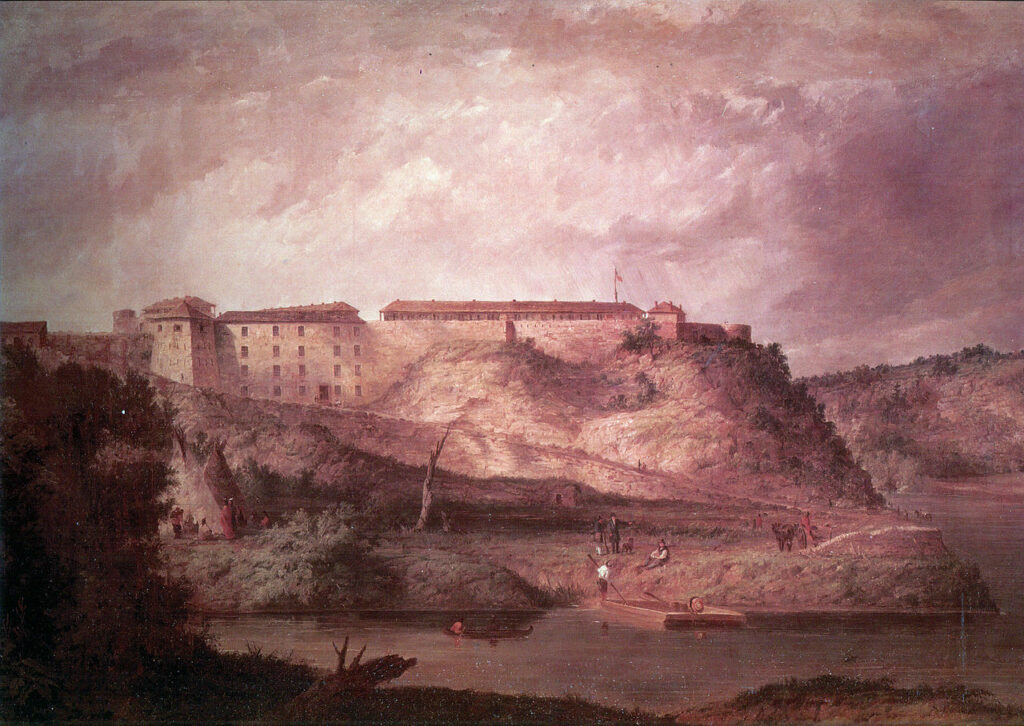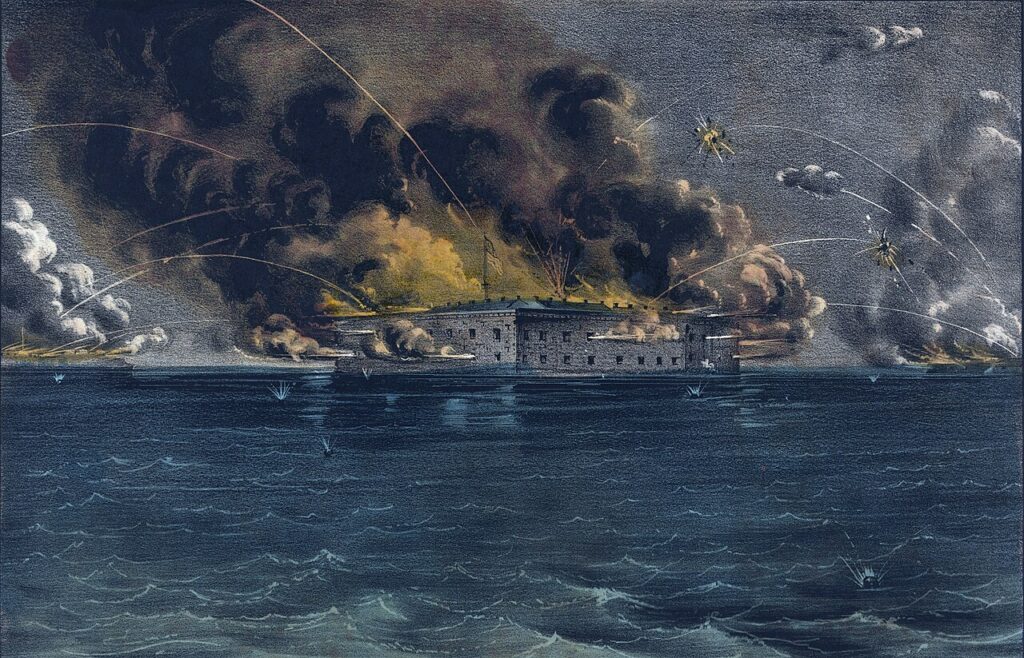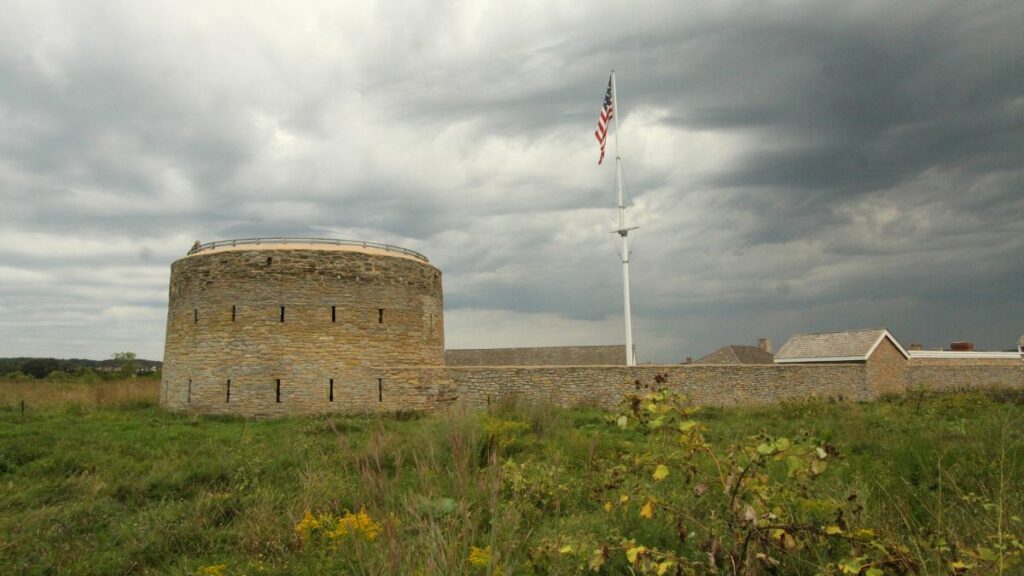Minnesota, a state rich in natural beauty and cultural heritage, boasts a compelling military past that has played a pivotal role in shaping the region and the nation.
From historic forts that bore witness to key events and figures, to the intricate interplay between Native Americans, settlers, and the military, Minnesota’s history offers a tapestry of stories waiting to be explored.
In this comprehensive guide, Historic Forts in Minnesota delves into the state’s storied military history, shedding light on iconic forts, pivotal battles, and the enduring legacy they have left behind.
History of Historic Forts in Minnesota

Minnesota’s legacy in American history is woven with a rich tapestry of historical forts that have played crucial roles in the state’s past.
Throughout the state, numerous forts have witnessed significant events and key figures in the development of Minnesota and the nation at large. This section delves into the history of these historic forts and their impact on the region.
One of the most well-known forts in Minnesota is Fort Snelling, located at the confluence of the Mississippi and Minnesota rivers. Established in the early 19th century as Fort Saint Anthony, this military post was renamed in honor of Colonel Josiah Snelling, who supervised the fortification’s construction from 1820 to 1824.
Fort Snelling served as a defensive and trade establishment, playing a pivotal role in American westward expansion by keeping the peace with nearby Dakota and Ojibwe tribes and supporting the fur trade industry.
Fort Ridgely
Another significant fort in Minnesota’s history is Fort Ridgely, built-in 1853 as a military post and frontier settlement in Renville County.
Fort Ridgely was the site of two crucial engagements during the Dakota War of 1862, a conflict that marked a turning point in relations between the United States and the Dakota people. Now a state park, the fort enables visitors to delve into Minnesota’s past and witness the remnants of its once-rich military history.
Additionally, the remains of Fort Ripley, located along the Mississippi River near Little Falls, offer a glimpse into Minnesota’s role during the mid-1800s. Established in 1848, Fort Ripley was primarily used as a training center for military personnel.
Franklin Steele, a prominent local businessman, was instrumental in providing supplies and resources for the fort’s construction. Fort Ripley was eventually decommissioned after the Civil War but still stands as a testament to Minnesota’s military history.
Origins and Construction of Fort Snelling
In the early 19th century, Lieutenant Zebulon Pike embarked on an expedition to explore the upper Mississippi River region and identify suitable locations for military posts.
During his journey, he discovered a suitable site for a fort at the confluence of the Mississippi and Minnesota rivers. This location would later become the site of Fort St. Anthony in Minnesota.
Upon Pike’s recommendation, the United States government began constructing the original building of Fort St. Anthony in 1819. Colonized by military personnel and led by Colonel Snelling, the construction aimed to establish a strategic location for trade and interactions with Native American tribes living in the area.
The original design of the fort was simple, consisting of basic wooden structures like barracks and storage. As time passed, the United States government recognized the need for a more permanent fort to protect its regional interests.
Renaming of Fort St. Anthony
This led to further site development, and the building eventually became a permanent fort. The fort was renamed Fort Snelling in honor of Colonel Snelling, who oversaw its construction and initial years of operation.
Over the years, Fort Snelling underwent numerous modifications, including adding more durable buildings and improved defensive structures.
This transformation from a modest wooden building into a fully functional permanent fort exemplifies the strategic importance of the site and the foresight of Lieutenant Zebulon Pike and Colonel Snelling.
The fascinating history of this historic fort in Minnesota showcases the origins and construction process that shaped its long-lasting significance in the region.
Native Americans and Historic Forts
Minnesota has a rich history of Native American presence, with several Native American Nations, including the Dakota People, having connections to historic forts in the region. A significant part of the Dakota Homeland, these forts often played critical roles in the interactions between Native Peoples and incoming settlers.
Trade Opportunities in the 19th Century
During the early 19th century, the establishment of forts in Minnesota provided opportunities for trade between Native Americans and European settlers.
One such example is Fort Snelling, located at the confluence of the Mississippi and Minnesota Rivers, which allowed the Dakota People and other Native American Nations to trade goods with the newcomers.
Treaty Negotiations at the Forts
The importance of these forts went beyond trade, as they also served as locations where treaties were negotiated to define the relationship between the United States government and Native American tribes.
The Treaty of 1851, for instance, was signed at Traverse des Sioux and Mendota, affecting the rights and lands of the Dakota People in Minnesota.
The Dark Side of Historic Forts
Unfortunately, tensions and conflicts arose as the European presence encroached on Native American lands. Some historic forts were repurposed as internment camps for Native Peoples.
Fort Snelling, for example, served as a concentration camp for more than 1,600 Dakota people during the winter of 1862-63 and has a tragic history of suffering, disease, and death.
Balancing Recognition with Remembrance
In recognizing the historical connections between Native Americans and historic forts, it is crucial to acknowledge both the benefits and consequences these structures had on Native Peoples in Minnesota.
While they facilitated trade and the signing of treaties, these forts also served as painful reminders of injustice, conflict, and loss for the Dakota People and other Native American Nations.
Fort Snelling and Its Significance

Fort Snelling is a historic site of great importance. Managed by the Minnesota Historical Society, this National Historic Landmark is vital in shaping the region’s history. The fort is situated in Fort Snelling State Park, which offers a serene and beautiful environment for visitors, surrounded by nature.
Established as a military post in the 1820s, Fort Snelling played a crucial role in the early development of the American West.
It was strategically positioned at the junction of the Mississippi and Minnesota Rivers, which allowed it to facilitate trade and transportation. The confluence of these two rivers served as a meeting point for various cultures and communities.
Throughout its history, Fort Snelling has served various military purposes. It functioned as a training and recruitment center in times of conflict, such as the Civil War and World War II.
The fort also played a vital role in the U.S.-Dakota War of 1862 and the founding of the state’s capital, Saint Paul, as it helped to maintain law and order in the region.
Fort Snelling National Cemetery
Fort Snelling National Cemetery is a prestigious resting place for military veterans and active personnel. The Minneapolis, Minnesota, cemetery spans over 450 acres and is a tribute to the brave individuals serving the United States.
Established in 1870, Fort Snelling played a crucial role in the state’s military history. Its primary function was to train soldiers during various conflicts, including the Civil War, World War I, and World War II. The fort is now a unique symbol of Minnesota’s rich military past.
Authorized By Congress
In 1939, the creation of Fort Snelling National Cemetery was authorized by Congress, with the first burial in 1940. Initially designed to accommodate 25,000 graves, the cemetery has expanded to hold approximately 180,000 gravesites.
This expansion to accommodate the growing number of military veterans and active military members demonstrates the cemetery’s significance and respect for those who have served the country.
Some notable features of Fort Snelling National Cemetery include the beautiful Memorial Rifle Squad Committal Shelter and the granite memorial, which honors over 200 Minnesotans who gave their lives during the Vietnam War.
The meticulously maintained cemetery emphasizes a serene and dignified environment for those interred here and their visiting loved ones.
Visitors to Fort Snelling National Cemetery can appreciate the profound respect and gratitude that the nation has for military veterans and active military personnel.
This historic site is a constant reminder of the sacrifices, dedication, and patriotism exhibited by the brave men and women who have donned the uniform.
Civil War and Forts

Minnesota’s forts protected the state and its citizens during the Civil War.
The need for fortified structures to protect supply lines, trade routes, and vital communication channels became increasingly apparent as the conflict erupted between the Union and Confederate forces.
Fort Snelling’s Enhanced Role
One of the key forts in this era was Fort Snelling. Established in 1819 as a Federal Army frontier outpost, it served as a defensive structure for the region.
When the Civil War broke out, the fort’s importance grew significantly, as it became a significant training and recruitment center for Federal Troops headed to the front lines.
The War Department’s Initiatives
The War Department, known today as the United States Department of War, recognized the strategic value of these forts and worked to establish fortifications and military outposts across Minnesota.
They understood that maintaining control of these structures was essential in providing security for the state and the entire Union.
Expansion and Establishment of New Forts
Several other forts were built or expanded across Minnesota during the Civil War. These included Fort Abercrombie, Fort Ridgely, and the newly built Fort Wadsworth.
Each fort served a unique purpose throughout the war, ranging from training facilities to arsenal storage and even as an emergency refuge for civilians in times of conflict.
Legacy of Minnesota’s Civil War Forts
The role of fortifications in Minnesota during the Civil War showcases their importance in maintaining stability and security during tumultuous times.
These structures supported Federal Troops, ensuring they could effectively defend their homeland and contribute to the war effort. As the nation emerged from the conflict, the forts would continue to serve as symbols of resilience and the enduring strength of the United States.
Related: 10 Historic Forts in Montana
Change of Purposes Over Time
The forts in Minnesota have undergone significant changes in their purposes over time, reflecting the evolving needs and priorities of the region. Originally established as trading posts, these forts facilitated trade between European settlers and indigenous tribes.
As Minnesota’s population and strategic importance grew, the focus shifted to military reservations, educational establishments, and commercial uses of the rivers.
Many historic forts, such as Fort Snelling, began as trading posts. Settlers and fur traders found these locations advantageous for exchanging goods and services with Native Americans.
Over time, the growing population and shifting political landscape changed the roles these forts played, transitioning from trading posts to military reservations.
Defensive and Strategic Roles
As military reservations, forts in Minnesota were used to maintain order, deter aggression, and protect settlers from potential threats.
Foundations like Fort Ridgely and Fort Abercrombie played significant roles in the Dakota War of 1862 and other regional conflicts. These forts adapted to the changing technology and tactics throughout their military service.
Educational Endeavors
In later years, several forts embraced an educational purpose, transforming into schools or centers promoting historical knowledge.
For instance, partially restored Fort Ridgely offers interpretive programs and preserves historical artifacts to understand Minnesota’s military history further.
Commercial Uses and Economic Stimulation
With the development of infrastructure and the expansion of commerce in the region, many forts played a role in the commercial use of rivers.
Forts such as Fort Snelling and Fort Ripley capitalized on their strategic locations along the Mississippi and other major waterways. Ports and transportation hubs sprouted around these forts, stimulating economic growth and contributing to the growing importance of river commerce in the region.
Related: 10 Historic Forts in Nebraska
Preservation and Visitors Information

Historic forts in Minnesota are under the watchful care of organizations such as the National Trust and Historic Preservation groups, ensuring these essential sites are maintained for future generations.
Collaboration with local and state agencies helps protect the cultural heritage present within the walls of these forts.
Role of Visitor Centers
Visitor Centers play a significant role in enhancing the experience of those who come to explore Minnesota’s historic forts.
Knowledgeable staff members provide valuable information, guided tours, and educational resources, clearly and engagingly presenting the sites’ history and significance.
Benefits of MNHS Membership
Becoming an MNHS Member offers numerous benefits, such as free or discounted admission to various historic sites, invitations to special events, and exclusive access to certain areas or experiences.
It’s a worthwhile investment for individuals interested in delving deeper into Minnesota’s rich history.
Visiting the Historic Forts
Most historic forts in Minnesota are open throughout the week, with many sites being open on Wednesdays.
This gives visitors ample opportunity to explore the forts at their leisure. It’s essential to plan one’s visit by checking the specific operating hours and available guided tours.
Related: 5 Historic Forts in Wisconsin
Impact on Minnesota and Surroundings
Historic forts in Minnesota played a significant role in shaping the growth and development of the region.
The establishment of these forts influenced the expansion of trade and economy, the interactions with Native American tribes, and the eventual urbanization of areas such as St. Paul and the towns of Minneapolis.
Forts as Hubs of Commerce
These forts acted as strategic defense and trading posts in the Upper Midwest. As a result, the chain of forts contributed to the development of communities near the banks of the Mississippi and Missouri Rivers.
Traders saw the fortified outposts as hubs of commerce, where goods could be exchanged with neighboring tribes and other traders, connecting communities across the region.
Diplomatic Centers with Native American Tribes
Beyond trade, the forts in Minnesota also played a vital role in maintaining relationships with Native American tribes.
As these historic forts functioned as places for negotiation and conflict resolution, their presence facilitated communication and diplomacy between different groups.
Urbanization and Population Growth
In areas such as St. Paul and the towns of Minneapolis, the establishment of forts boosted population growth through the influx of settlers seeking protection and opportunities.
These growing communities gave rise to the early cities and towns in the region, which eventually developed into the bustling urban centers we know today.
Lasting Impact of the Forts
Ultimately, the impact of forts in Minnesota extended beyond their initial purpose as defensive structures and trading posts.
Their presence helped shape the development of St. Paul, the towns of Minneapolis, and the Upper Midwest, fostering trade, diplomacy, and urbanization along the Mississippi and Missouri Rivers.
Transformation During World War II
During World War II, historic forts in Minnesota experienced significant transformations. The outbreak of the war led to the repurposing of these forts for various strategic and defensive purposes.
One notable change was the allocation of space to house Japanese Americans who were forcibly removed from their homes on the West Coast.
Role of the Civilian Conservation Corps
In this period, the role of the Civilian Conservation Corps (CCC) became pivotal, as they worked on the restoration and preservation of these forts.
Established in the early 1930s, the CCC provided employment opportunities for young, unemployed men during the Great Depression. Their efforts in Minnesota included repairing the infrastructure of these forts and improving the surrounding landscapes.
Fort Snelling’s Multifaceted Role
Several forts in Minnesota were vital during the war. For instance, Fort Snelling served as an induction and training center for soldiers, where thousands of men and women were trained for various military roles.
This strategic location near the convergence of the Mississippi and Minnesota rivers made it an ideal site for a military base. Additionally, the fort housed Japanese Americans and other “enemy aliens” as deemed by the federal government.
Legacy of Fort Ridgely
Another prominent fort during this period was Fort Ridgely. While it did not serve a direct military purpose in World War II, it played a crucial role in shaping local and regional histories.
Its rich history includes conflicts with the Dakota people in the 1860s, which drew the attention of CCC workers for its preservation. They conducted many restoration projects on the ruined buildings and constructed new facilities at the site.
Conclusion – Historic Forts in Minnesota
In the heart of Minnesota, Historic Fort Snelling stands as a testament to the region’s strategic importance and rich heritage. Overlooking the scenic confluence of the Minnesota River, this iconic stronghold has witnessed pivotal moments under the banner of the United States Army.
Today, as we stroll through its visitor center, we are not just revisiting a landmark but embarking on a journey through time, retracing the steps of soldiers, settlers, and Native Americans. As the tales of Fort Snelling continue to be told, it remains an indelible part of Minnesota’s legacy, inviting generations to explore and reflect.
If you have visited any of these forts, we would love to hear about your experience in the comments section below.

Cory is a website owner and content creator who enjoys fishing, history, coin collecting, and sports, among other hobbies. He is a husband and father of four.
Romans 15:4 For whatever was written in former days was written for our instruction, that through endurance and through the encouragement of the Scriptures we might have hope.

